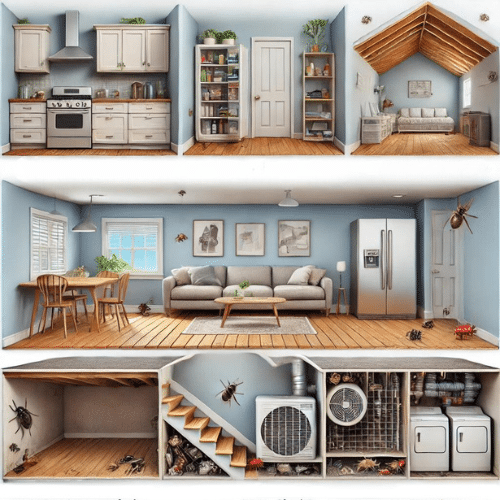
22 Aug Hidden Pest Hotspots to Check
Sneaky Pest Hiding Spots
Pest control is an essential part of maintaining a healthy and comfortable home, especially in South Florida, where the warm, humid climate invites various pests to thrive. While most people are aware of the obvious places to check for pests—like kitchens, bathrooms, and basements—there are several unlikely hotspots in your home that can easily be overlooked. These hidden areas can become breeding grounds for pests, leading to infestations that are both challenging and costly to control. At Pest Busterzz, we specialize in identifying these hidden hotspots and providing effective, eco-friendly solutions to keep your home pest-free.
Understanding and addressing these unlikely pest hotspots is crucial for homeowners and business owners alike. By regularly inspecting and maintaining these areas, you can prevent minor pest problems from turning into major infestations. In this article, we will explore some of the most overlooked areas in your home that pests may be hiding, and provide tips on how to keep these areas pest-free.
Unseen Kitchen Pest Zones
The kitchen is the heart of the home, but it’s also a magnet for pests. One of the most overlooked areas is under and behind the refrigerator. Food crumbs, spills, and moisture can accumulate in these hidden spots, attracting pests like ants, cockroaches, and rodents. These pests are drawn to the warmth and food sources that refrigerators provide. Over time, the buildup of debris can create a perfect breeding ground for an infestation.
To prevent pests from taking up residence behind your refrigerator, it’s essential to clean this area regularly. Pull the refrigerator away from the wall at least once every few months and thoroughly clean the floor, walls, and back of the appliance. Pay close attention to any food crumbs, grease, or moisture that may have collected. Additionally, check the seals around the refrigerator door for any damage, as pests can use these gaps to access the interior.
Another common but overlooked hotspot is inside the oven and microwave. Food particles and grease can easily accumulate in these appliances, attracting pests such as ants and cockroaches. While these pests may start by foraging on the food debris, they can eventually spread to other areas of your kitchen and home.
Regular cleaning of your oven and microwave is crucial to keeping these pests at bay. After cooking, wipe down the inside of your microwave to remove any splatters or crumbs. For the oven, use a self-cleaning feature if available, or manually clean the interior, including the oven racks. Don’t forget to clean under the oven as well, as this area can also harbor food debris and pests. By keeping these appliances clean, you reduce the risk of attracting unwanted guests into your kitchen.
Attic Pest Hideaways
Attics and crawl spaces are often out of sight and out of mind, making them prime locations for pests to hide and thrive. These areas provide pests with the shelter, warmth, and materials they need to build nests. Rodents, insects, and even birds can make their homes in your attic insulation or among stored items like boxes, old furniture, and holiday decorations.
To prevent infestations in your attic or crawl space, it’s important to regularly inspect these areas for signs of pests. Look for droppings, gnawed materials, and nesting sites. If you store items in these spaces, use plastic bins with tight-fitting lids instead of cardboard boxes, which can be easily chewed through by rodents. Additionally, consider using pest-resistant insulation, which can help deter pests from nesting in your attic. Keep the area clean and free of clutter to reduce the likelihood of pests taking up residence.
Vents and ducts in your attic or crawl space can also serve as entry points for pests. Damaged or uncovered vents provide easy access for rodents, insects, and even birds to enter your home. Once inside, these pests can cause significant damage to your HVAC system and insulation, leading to costly repairs.
To protect your home from pests, inspect all vents and ducts in your attic and crawl spaces regularly. Make sure they are properly sealed and covered with screens to prevent pests from getting in. If you notice any signs of damage, such as torn screens or gaps around the edges, repair them promptly. Keeping these entry points secure will help prevent pests from invading your home and causing problems in your attic or crawl space.
Secret Pest Pathways
The areas behind your walls and baseboards are another unlikely hotspot for pests, especially in older homes. Plumbing and electrical conduits create small gaps and crevices that pests can use to move throughout your home. Rodents, ants, and cockroaches are particularly skilled at squeezing through these spaces in search of food, water, and shelter.
To prevent pests from using these hidden pathways, inspect the areas around your plumbing and electrical conduits for gaps or cracks. Use caulk or expandable foam to seal these openings and block pest access. Additionally, monitor for signs of pest activity, such as droppings, gnaw marks, or dead insects near baseboards or around outlets. If you suspect an infestation, it may be necessary to call a professional pest control company like Pest Busterzz to conduct a thorough inspection and address any hidden pest problems.
Hollow walls and baseboards provide an ideal environment for pests like termites, ants, and rodents to nest and travel unnoticed. These pests can cause significant structural damage if left unchecked, especially termites, which feed on wood and can compromise the integrity of your home’s framework.
Early detection is key to preventing extensive damage, so it’s important to have regular inspections by a professional pest control company. At Pest Busterzz, we use advanced tools and techniques to detect hidden pest activity within your walls and baseboards. If we find signs of an infestation, we’ll recommend the most effective treatment plan to eliminate the pests and protect your home from further damage.
Moisture-Driven Pest Problems
Laundry rooms and utility areas often go unnoticed when it comes to pest control, but they can harbor pests due to the presence of moisture and lint. The warm, damp environment created by washing machines and dryers is particularly attractive to pests like cockroaches, silverfish, and mold mites. These pests can thrive in the crevices around appliances, feeding on lint, soap residue, and organic matter.
To keep pests out of your laundry room, make sure to clean around and behind your appliances regularly. Remove lint buildup from your dryer vent and filter, as this can attract pests and create a fire hazard. Address any leaks or standing water promptly, and keep the area dry to discourage pests from settling in. Regular maintenance and cleanliness are essential in preventing pest infestations in your laundry room and utility areas.
Water heaters and utility sinks are other areas that can attract pests due to the presence of moisture and standing water. Leaks around water heaters or under sinks can create a conducive environment for pests like cockroaches, ants, and even rodents. These pests are drawn to water sources, and once they find their way into your home, they can quickly become a nuisance.
To prevent pests from infesting your water heater and utility sink areas, check for leaks and repair them as soon as possible. Ensure that the area is well-ventilated and dry, and consider using moisture-absorbing products to keep humidity levels low. Regularly inspect these areas for signs of pests, such as droppings, gnaw marks, or dead insects, and take action immediately if you notice any issues.
Furniture’s Secret Pests
Furniture and upholstery are often overlooked as potential pest hotspots, but they can harbor a variety of pests, including bed bugs, fleas, and dust mites. These pests can hide in the seams, cushions, and crevices of your furniture, feeding on dust, skin cells, and even blood. Bed bugs, in particular, are notorious for infesting mattresses, sofas, and chairs, causing discomfort and anxiety for homeowners.
To prevent pests from infesting your furniture, it’s important to clean and vacuum regularly. Pay special attention to the areas under cushions, inside seams, and along the edges of upholstery. If you suspect bed bugs or other pests in your furniture, contact a professional pest control company like Pest Busterzz for a thorough inspection and treatment. We offer specialized services to eliminate bed bugs and other pests from your home, ensuring your furniture remains clean and pest-free.
Storage furniture, such as chests, trunks, and cabinets, can also become hiding spots for pests, especially if they are rarely used. Pests like cockroaches, spiders, and rodents can find their way into storage furniture, where they can nest and multiply unnoticed. The clutter and darkness inside these pieces of furniture make them attractive to pests seeking shelter and food sources.
To keep storage furniture pest-free, it’s important to inspect and clean these items regularly. Avoid storing food or organic materials in these areas, as they can attract pests. If you notice any signs of pest activity, such as droppings, webs, or chewed materials, take immediate action to address the issue. Proper maintenance and vigilance can help prevent pests from making a home inside your storage furniture.
Protect Your Outdoor Spaces
Garages and sheds are often used for storage, but they can also become hotspots for pests if not properly maintained. These outdoor structures provide shelter and protection for pests like rodents, spiders, and insects. Clutter, moisture, and food sources in these areas can attract pests and lead to infestations that can quickly spread to your home.
To prevent pests from taking over your garage or shed, keep these areas clean and organized. Store items in sealed containers, and remove any clutter that could serve as hiding spots for pests. Inspect the structure for gaps, cracks, or holes that pests could use to enter, and seal them promptly. Regularly clean and maintain these spaces to reduce the risk of pest infestations.
Door frames and window sills are common entry points for pests, especially if they are not properly sealed. Small gaps and cracks around doors and windows can allow pests like ants, spiders, and even rodents to enter your home. Once inside, these pests can quickly multiply and spread throughout your living space.
To keep pests out of your home, inspect your door frames and window sills regularly for signs of damage or wear. Seal any gaps or cracks with weatherstripping or caulk to block pest access. Additionally, ensure that screens on windows and doors are intact and free of holes. By securing these entry points, you can prevent pests from gaining access to your home and causing problems.
Conclusion
Keeping your home pest-free requires more than just addressing the obvious hotspots. Unlikely pest hotspots, such as those hidden behind appliances, inside furniture, and in outdoor structures, can easily be overlooked but can become significant sources of infestation if not properly managed. By regularly inspecting and maintaining these areas, you can prevent pests from taking up residence in your home and avoid the costly and stressful process of dealing with an infestation.
At Pest Busterzz, we understand the importance of comprehensive pest control and are committed to helping South Florida residents protect their homes and businesses. Our family-owned, organic pest control company offers customized solutions that address both common and hidden pest hotspots, ensuring that your property remains safe and pest-free. If you suspect pests may be lurking in your home or want to take proactive steps to prevent infestations, contact us today to schedule a thorough inspection. Let us help you create a healthier, safer environment for you and your family.


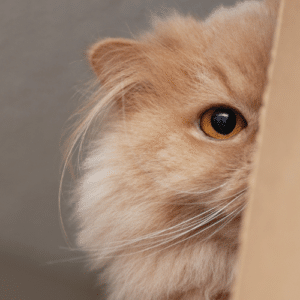
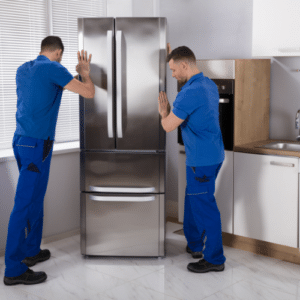
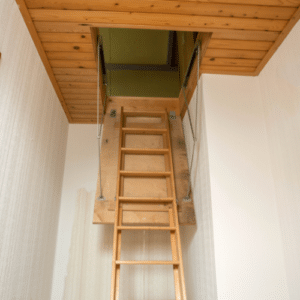

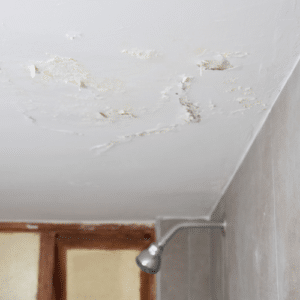
No Comments